By Elaine O’Rourke, Ostomy & IBD Health Mentor
When you are able to talk honestly about sex and intimacy, it will help build a healthier relationship. A chronic illness or an ostomy can bring up different issues around relationships, whether you are single or in a partnership.
You may wonder when to tell a potential partner about your medical history or how to rediscover passion within your current relationship. You may need to get creative with how you are having sex and pleasuring each other.
How to communicate effectively
This is the key to everything in life! So needless to say it is the key when you are in a relationship. Yet, it can be so difficult to communicate effectively.
Personally, I try to express, with compassion, what I am experiencing and being open to hearing their perspective. This will help open the dialogue about sex and intimacy.
It is so important to get comfortable talking about your ostomy, IBD or any chronic illness with your partner. If you’re not feeling sexy, desirable or if it’s painful to have sex then your partner needs to know. Likewise, your partner may be having difficulty accepting your new body and feel guilty about that.
Seek help if you need it. As an Ostomy/IBD Health Mentor I help people with many of the emotional issues that arise.
Check out this video clip from my talk on “Intimacy” at the Girls with Guts retreat last year.
Your partners perspective
It can also be really difficult for your partner to witness you go through so much pain. It’s important to nurture your partner too. Ask them if they have questions about your ostomy or how things work. They might be feeling nervous and afraid. By opening the conversation you are helping them to voice how they are feeling and how they are dealing.
Sex
The act of sex includes sexual intercourse. But this may not be possible for everybody. Or you might discover that it feels very different depending on what surgery you have. It might be painful or you may not be able to have an erection or ejaculate. (See videos on Pelvic Floor Physical Therapy and Men’s Health with IBD or Ostomy).
If you are in your head and worried about what your partner thinks, or if you are embarrassed or self-conscious about how you look, then it will be really hard to let go and enjoy sex. Feelings of being inhibited need to be addressed. This is an area included in my ostomy and IBD programs.
Rekindling your relationship
Practicing patience and knowing you have to give your body time to heal. Your partner needs to know how you are feeling. If you are dating someone you need to explain to them what’s going on. It’ll either make or break a relationship.
If sexual intercourse isn’t possible then get creative with other ways of pleasuring each other through oral sex, touching, kissing, cuddling, sex toys.
Logistics
Before sex I always empty the pouch. I’m not taking any chances! You will feel much better about things and your partner will be grateful too.
If a position doesn’t work for you then you have to let your partner know. Know your boundaries.
Take your time to get to know each other again, to become familiar with how your bodies work together now. Be patient with each other. And make it fun. Remember the more comfortable you are about your body, the more comfortable your partner will be.
If you are having a flare up, or going through cancer treatments then chances are you are not feeling sexy at all and a cuddle is all you can handle.
Intimacy
Intimacy requires really opening up more and letting someone see you for who you are. Being able to share you fears and worries, being vulnerable, honest and authentic.
Intimacy is different to the act of sex but when combined then it makes a really healthy relationship.
Intimacy creates sensitivity. When you are intimate you become sensitive to yourself and to others.
When to tell someone about your ostomy or illness
Each relationship is going to be different. It may also depend on how long you’ve had your ostomy or illness.
Personally I wouldn’t intend to tell someone on a first date that I have an ostomy but if the timing is right then I might.
Most importantly, is to honor how you are feeling. It’s all about what you are comfortable with. You want someone to form an opinion on your personality and not based around your ostomy or diagnosis.
Sometimes, just having an ostomy has been a great way to NOT have a one-night stand!
If you are having a one-night stand then tell the person beforehand. But try not to go into a feeling of rejection if they don’t want to proceed. They are probably doing you a favor in that case! (See video below on Overcoming rejection with Chronic Illness or Ostomy).
I’ve found that when I explain the events leading to my ostomy how ill I was and then there is more empathy and understanding of why I’ve an ostomy and all that I’ve endured.
Resources
Blog and video on Sexual Issues with an Ostomy has great information along with the https://elaineorourke.com/sexual-issues-with-an-ostomy-or-ibd/
UOAA has a sexuality guide which explains the types of surgeries, and how they affect sexual function and the emotional component as well.
Make sure to grab your FREE GUIDE: ‘3 simple ways to eliminate fears about your ostomy” by visiting Elaine’s website www.ElaineOrourke.com
About Elaine
Elaine O’Rourke is an Ostomy/IBD Health Mentor and the creator of the program “Surviving To Thriving: Overcoming Ostomy Challenges So You Can Live a FulFilling Life”. She is a certified Yoga Therapist & Teacher since 2003, Sound Healer, EFT & Reiki Practitioner, Recording Artist and International Retreat Leader. Her lighthearted and fun personality shines through her teachings/programs as she loves to inspire others. She is a contributing writer to the national Phoenix Magazine and UOAA, presenter at the UOAA National Conference and speaker at Girls with Guts retreat.
YouTube: Elaine O’Rourke Yoga, Ostomy, IBD
Facebook: https://www.facebook.com/ostomyibdlife/
Instagram: https://www.instagram.com/ostomyibdlife/

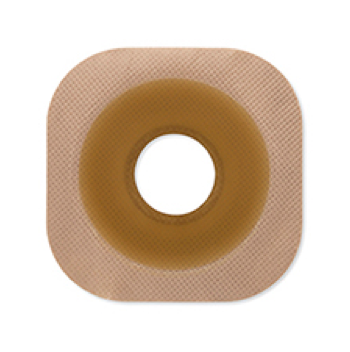
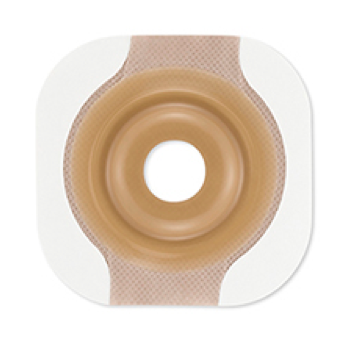
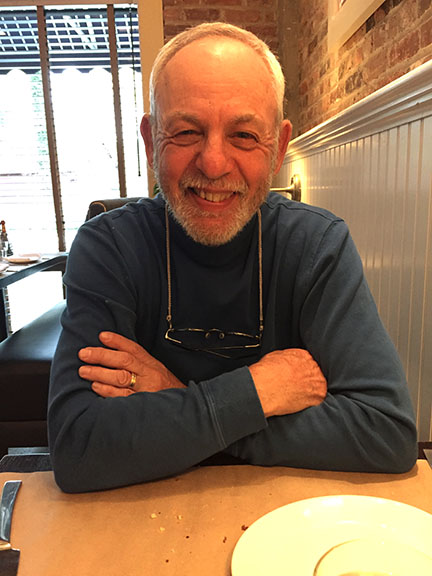 The day for my fourth cystoscopy had finally arrived. My doctor smiled and asked if I was ready for this exam. With a nod from me, turned off the lights, and guided the instrument into my body. He reiterated that there were cells in my bladder. I felt a large lump in my throat, and my face began to flush. Because these cells had been so aggressive and returned after the three previous treatments, there were no additional medications that could be used. He explained there were several other choices: (1) do nothing, (2) having a
The day for my fourth cystoscopy had finally arrived. My doctor smiled and asked if I was ready for this exam. With a nod from me, turned off the lights, and guided the instrument into my body. He reiterated that there were cells in my bladder. I felt a large lump in my throat, and my face began to flush. Because these cells had been so aggressive and returned after the three previous treatments, there were no additional medications that could be used. He explained there were several other choices: (1) do nothing, (2) having a  pouch and supplies, along with a change of clothes, solves this concern. My medical supplier provided a small pouch to carry these items. Initially, I had many questions about the ostomy pouch. However, when various concerns arose, (getting this device on properly, leaks, or supplies), my nurse responded to these questions promptly and gave me the reassurance I needed. Trust me, I continued to have questions for months after my surgery. By that time I built up enough confidence in using this device, and it became more routine. Ostomy nurses serve as a great resource. They also recommended a monthly support group. Knowing what others have gone through, and how they dealt with their post-surgical life, can be very helpful.
pouch and supplies, along with a change of clothes, solves this concern. My medical supplier provided a small pouch to carry these items. Initially, I had many questions about the ostomy pouch. However, when various concerns arose, (getting this device on properly, leaks, or supplies), my nurse responded to these questions promptly and gave me the reassurance I needed. Trust me, I continued to have questions for months after my surgery. By that time I built up enough confidence in using this device, and it became more routine. Ostomy nurses serve as a great resource. They also recommended a monthly support group. Knowing what others have gone through, and how they dealt with their post-surgical life, can be very helpful.
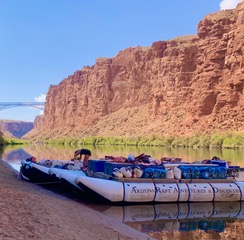
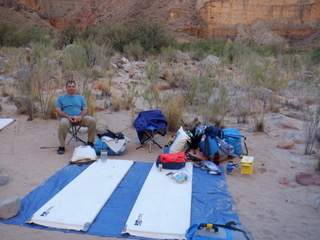
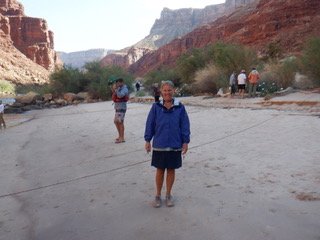 The last day on the river was a half day. Once we got off the boats we are onto a bus for three hours. Luckily there was a real bathroom stop. Here I just switched out bags. We got back to the hotel and into the shower I went. I had so much adhesive on my skin. I used a ton of adhesive remover, then took a face cloth and washed the whole area. My skin looked pretty good for being engulfed in adhesive for 8 days lol. It took a while to get all the adhesive off. It felt amazing when it was. Obviously, when I got out of the shower I dried off and put on a new ring, wafer and bag, no brava strips. My skin was very happy for this.
The last day on the river was a half day. Once we got off the boats we are onto a bus for three hours. Luckily there was a real bathroom stop. Here I just switched out bags. We got back to the hotel and into the shower I went. I had so much adhesive on my skin. I used a ton of adhesive remover, then took a face cloth and washed the whole area. My skin looked pretty good for being engulfed in adhesive for 8 days lol. It took a while to get all the adhesive off. It felt amazing when it was. Obviously, when I got out of the shower I dried off and put on a new ring, wafer and bag, no brava strips. My skin was very happy for this.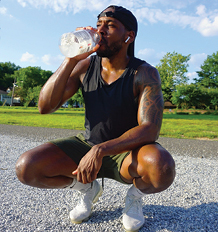 life. When the doctors first told me that the best option was to have ileostomy surgery, I was so upset but I was in so much pain I was hoping that it would make me feel better. When I finally woke up from surgery and realized I had an ileostomy – I cried. I didn’t even want to look at it. It took some time, but I got used to it, my stoma saved my life.
life. When the doctors first told me that the best option was to have ileostomy surgery, I was so upset but I was in so much pain I was hoping that it would make me feel better. When I finally woke up from surgery and realized I had an ileostomy – I cried. I didn’t even want to look at it. It took some time, but I got used to it, my stoma saved my life.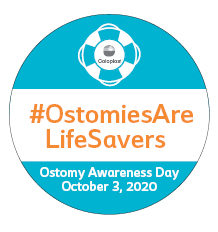 Having an ostomy should not hold you back from participating in the run/walk. Our Coloplast® Care team is here to support you if you want to chat, just give us a call at 1-877-858-2656. We also have
Having an ostomy should not hold you back from participating in the run/walk. Our Coloplast® Care team is here to support you if you want to chat, just give us a call at 1-877-858-2656. We also have 

